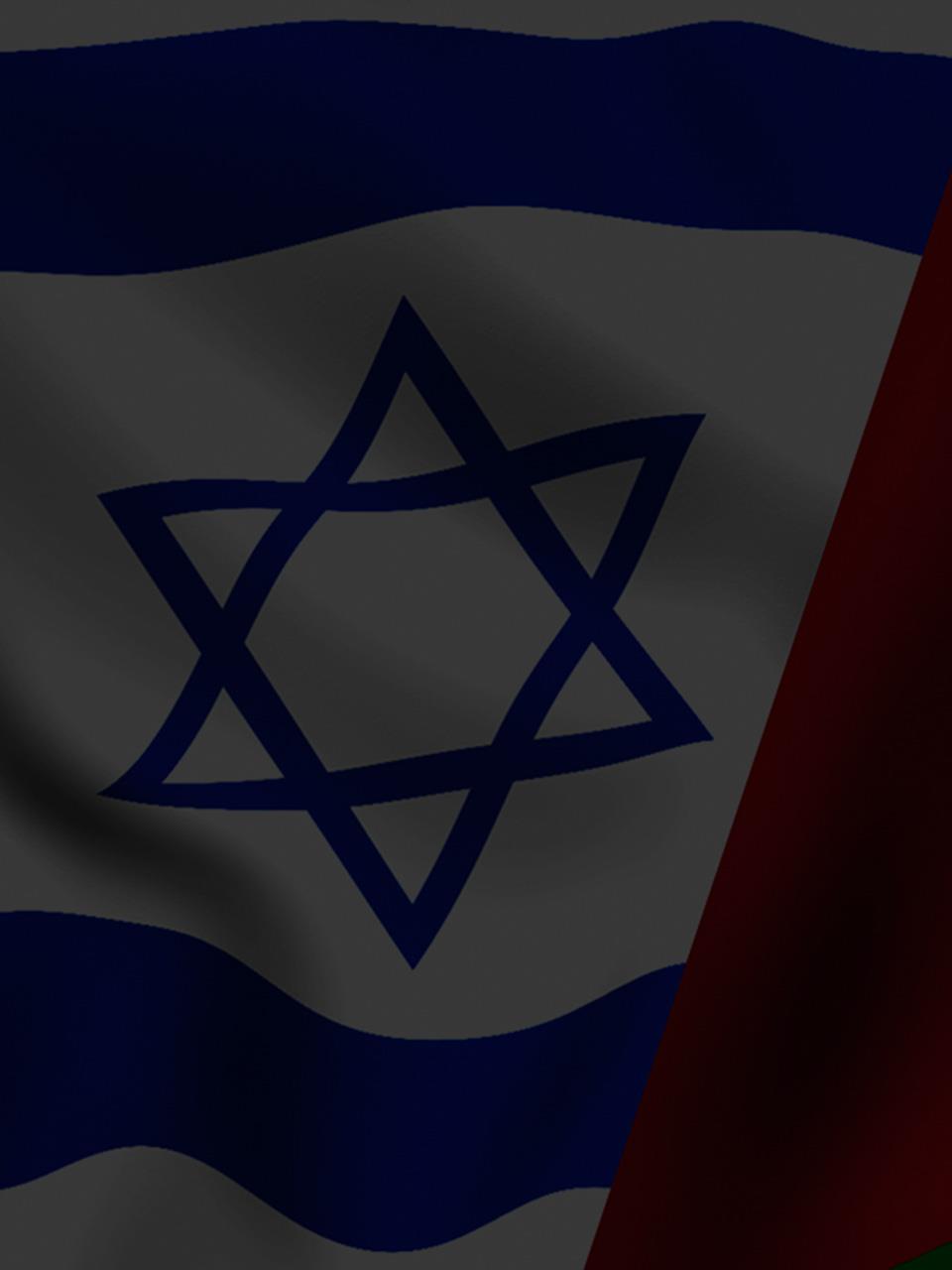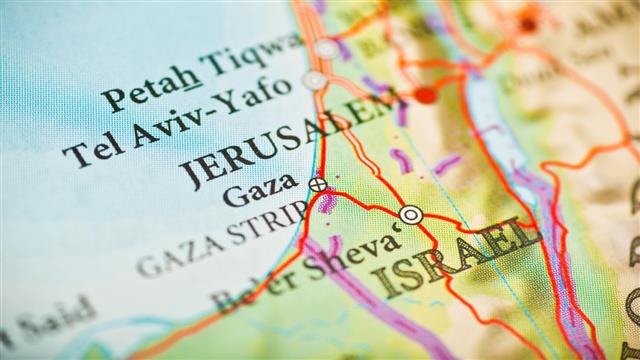
Tap to Read ➤
Gaza Strip Conflict: Why Were People Fighting Over the Gaza Strip
Marian K


The Gaza Strip is a small piece of land between Israel and Egypt. The area has seen many wars and has been in a continued state of turmoil for over half a century. The reasons for the conflict have changed with times and governments. This story deals only with the causes of conflicts post 2007.

The battle of Gaza is one of the most violent battles fought in recent times. This disputed land has had trouble with invasions and attacks since the past few decades.

However, the dispute assumed a bloody and more violent form only in the recent times. This land has become a cause of constant upheaval in the Middle East and unrest in other parts of world.

The Gaza Strip lies to the northwest of Israel and shares a 51 km border with it. On its west it has an 11 km border with Egypt and a coast line of 40 km on the Mediterranean. The total area of Gaza measures only 360 sq km. It is internationally accepted to be a part of Palestine.

History of Gaza Strip
The genesis of Gaza strip conflict in the region is rooted in the Jewish and Arab claim to the same area. In 1880s, Jews scattered all over the world, felt a strong desire to return to their land. Since, Romans had expelled them, they had no land of their own. Thus, they attempted to reestablish themselves in Palestine. This led to a Zionist movement.

During this time, Palestine was populated by Arabs, who did not quite liked the idea of Jews settling in Palestine and calling it their own land. The region remained under British control between 1917 and 1947 and was comparatively tranquil during this period. In 1947 Britain handed the problem of Palestine to the United Nations.

In those circumstances, dividing Palestine was the only viable option before United Nations. Thus, the independent state of Israel was born. However, after the nation of Israel was created, with boundaries determined by the United Nations in 1948, the region has seen one bloody conflict after another.

The Gaza Conflict
In 2006, both Gaza and the West Bank held elections. The hard line anti-Israeli Hamas party, which does not recognize the existence of Israel, won the elections. A bitter civil war ensued between the Hamas and the erstwhile ruling party 'Fatah', resulting in the ouster of the Fatah from the Gaza strip.

Hamas took control of the Gaza Strip in June 2007, and continued with its rhetoric of annihilating Israel. Thus a stage was set for another series of battles between the Palestinian and Israeli forces.
In mid May 2007, Palestinian forces fired over 200 Qassam rockets at the Israeli town of Sderot. Israeli warplanes responded with missiles and bombs, targeting Hamas military and political targets. In Feb 2008, Israeli ground forces once again entered Gaza, killing nearly 100 Hamas militants in a single day.
Israel also halted the supply of electricity, fuel and other essential goods into Gaza in an attempt to weaken Hamas. Despite world wide attempts to end the violence, Hamas continued to launch missile attacks on Israel.
On June 19, 2008, the Egyptians brokered a truce between the two warring factions and the region saw some peace except for the occasional rockets fired by Hamas militants. On Nov 4, 2008, Israeli military forces raided Hamas dug tunnels, made for the purpose of kidnapping Israeli border guards.
The truce brokered by Egypt was short lived when on December 20, Hamas officially announced that it was not prepared to extend the six-month long cease fire.
On December 27, Israeli forces launched a major air attack on Hamas political and military targets in Gaza. Reports indicate that between 200 and 255 Palestinians died on the first day of the attack. This was followed by the move of a massive Israeli ground force toward the Gaza border.
Hamas forces responded with more Qassam rocket attacks, with some newer, longer-range rockets reaching the Israeli cities of Ashkelon and Ashdod. On January 3, 2009, thousands of Israeli troops, in three brigade-size formations, backed by tanks and attack helicopters, launched an offensive into the Gaza Strip.
The Israeli military reported 30 soldiers received wounds in the opening hours of the attack, and also reported 'dozens' of casualties among the defending Hamas forces. It was also known that Israeli naval vessels assisted in the invasion, providing fire support into the Gaza Strip.
By the end of the first day of the ground offensive, Israel announced that its forces had bisected the Gaza Strip and surrounded the city of Gaza. Heavy combat operations were also reported near the northern Gaza towns of Beit Lahiya, Beit Hanoun and Jabaliya.
On January 6, 2009, Israeli forces fired mortar rounds at what they say was a launching area for Hamas rockets. The Israeli mortar shells struck a United Nations-run school at which hundreds of Palestinian civilians had taken shelter. The UN reported approximately 40 dead civilians in this attack.
The bombing of the school brought a large amount of criticism on Israel from around the world. Though, Israel justified the attack by claiming Hamas launched rockets from that area, Israel took a hit in terms of world public opinion.
However, Israeli troops pushed into heavily populated areas of Gaza City from the south on January 11 in hard fighting, in which Israeli and Hamas forces engaged in vicious unconventional asymmetrical warfare, house to house and street by street.
On January 17, Israel announced a unilateral ceasefire, deciding to halt operations without first securing an agreement with Hamas.
The next day, Hamas, Islamic Jihad and other Palestinian militia groups declared they would halt the launching of rockets into Israel for one week, demanding that Israel withdraw from Gaza within the week. Israeli armed forces soon pulled out of Gaza and also eased its embargo of essential commodities into the war ravaged area.
The Aftermath
The United Nations officials and the media estimated that the Israeli invasion had seen 524 Palestinians killed and 2,600 wounded. The majority of these casualties were among the members of Hamas security forces, along with at least 200 civilians.
Israel reported one soldier and three civilians killed since December 27, 2008 with 30 civilians wounded by Hamas rocket attacks. Although, Israel emerged victorious after the war, it has certainly earned a lot of criticism from the political community across the globe. To this date, the land of Gaza continues to endure frequent attacks of varied magnitude.
It is difficult to pin point as to who is responsible for the Gaza conflict. Some blame the Americans for not accepting the democratically elected Hamas to rule the state of Palestine. Others blame Israel for bombing the tunnels while the cease fire was in force.
Blame on the Hamas is justifiable because of their continued rocket attacks on Israel. However the blame game will not help the Palestinians living there. They have suffered a great deal with the ravaging of their land, destruction of the infrastructure and minimal help coming in from rest of the world.
In view of the large-scale devastation the area has witnessed, the reasons why were people fighting over the Gaza strip seem immaterial. All that matters is that peace should prevail in this war ravaged region.